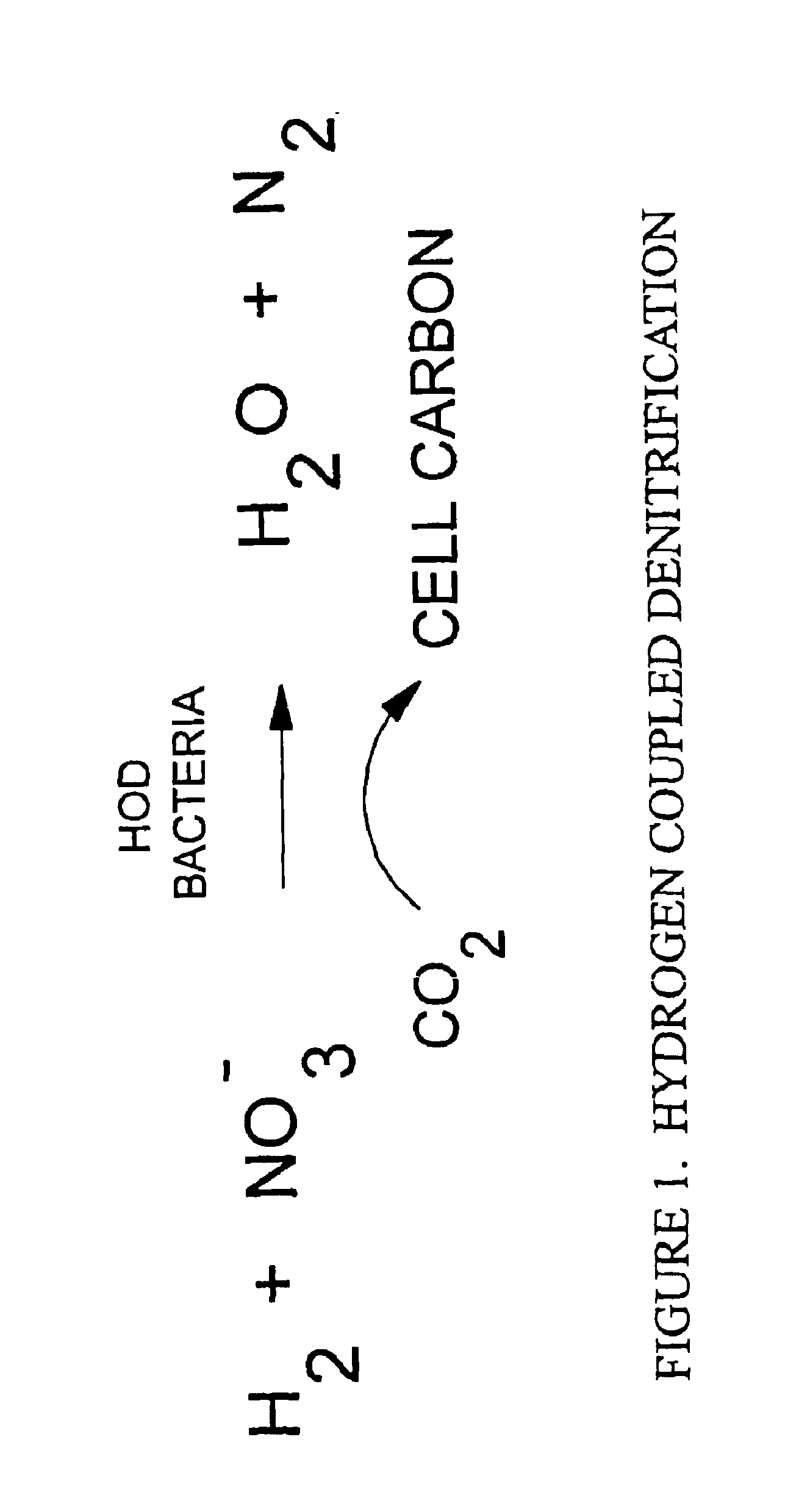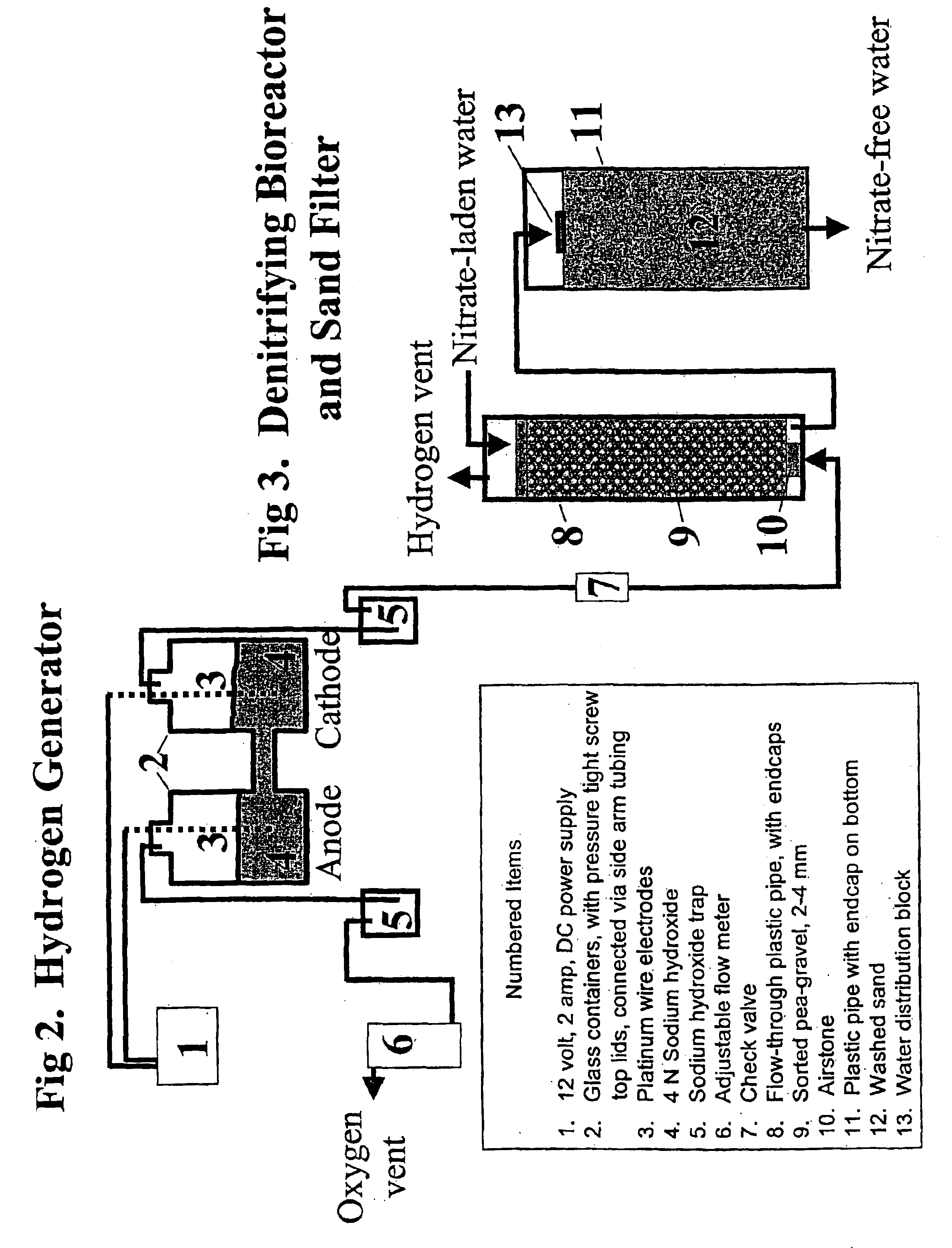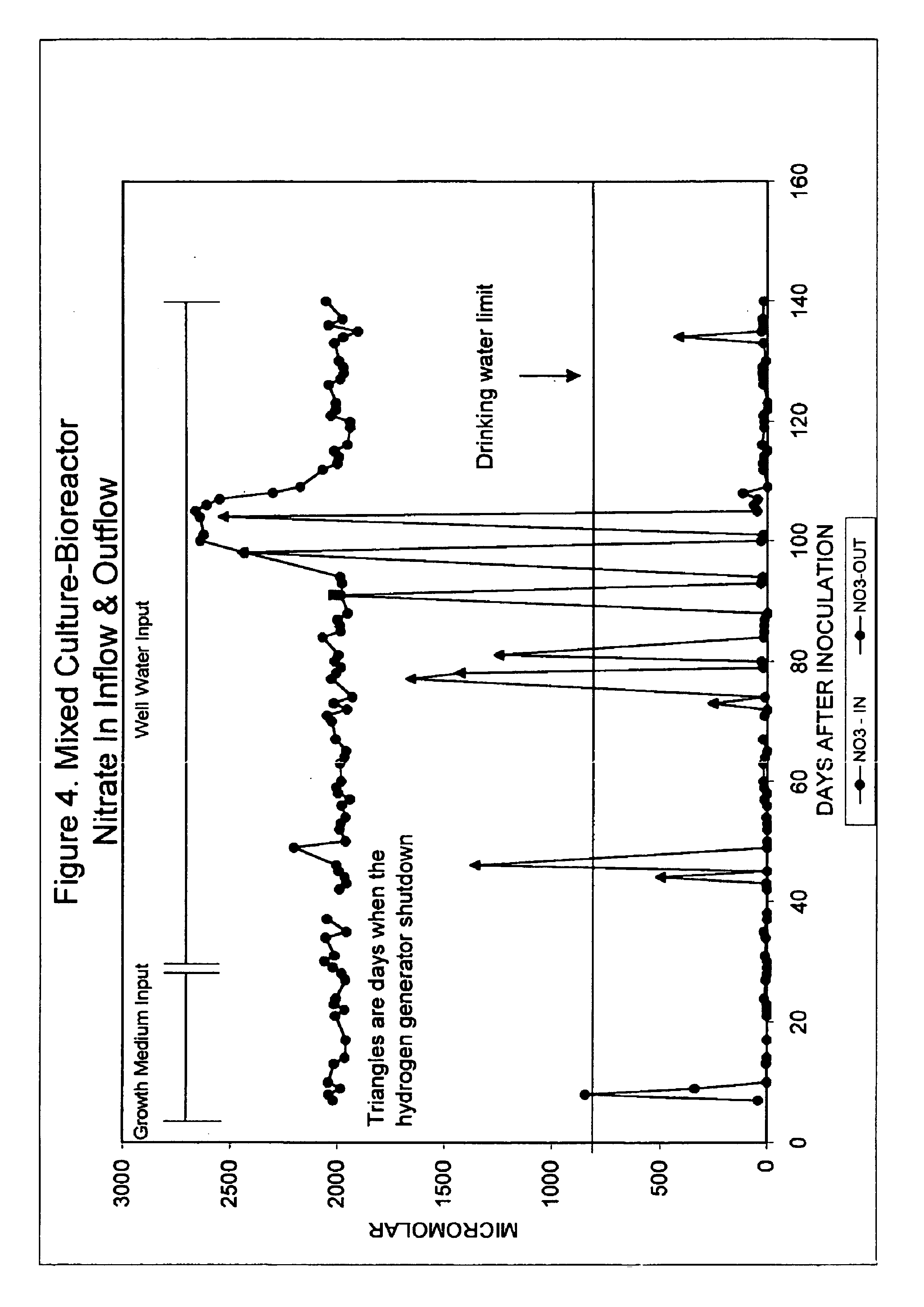Small-scale hydrogen-oxidizing-denitrifying bioreactor
a bioreactor and denitrifying technology, applied in water cleaning, multi-stage water/sewage treatment, water cleaning, etc., can solve the problems of increasing the burden on the individual user or household to deal with the problem, and the current available options for treating nitrate contamination on a small scale level are limited, so as to achieve the effect of maximizing the ability of the user to remove nitra
- Summary
- Abstract
- Description
- Claims
- Application Information
AI Technical Summary
Benefits of technology
Problems solved by technology
Method used
Image
Examples
Embodiment Construction
Most current understanding of denitrification as a process, and the denitrifying bacteria themselves, comes from studies relating to nitrogen removal mechanisms in soils and sewage treatment applications. Only recently has the process been studied in more nutrient-poor habitats, such as ground water. These studies have revealed that denitrification can occur in the subsurface under suitable conditions (Smith & Duff, 1988; Spaulding & Parrot, 1994), and that the physical, chemical, and biological factors that control the process in an aquifer are different from surface soils, sediments, and treated sewage (Brooks et al., 1992; Smith et al., 1992; Smith et al., 1996). The present inventor has also discovered that certain subgroups of denitrifying bacteria, whose ecological role previously had been only poorly studied, can be prominent in ground water. One such group is the hydrogen-oxidizing denitrifiers (Smith et al., 1994).
In the process of isolating and characterizing hydrogen-oxid...
PUM
 Login to View More
Login to View More Abstract
Description
Claims
Application Information
 Login to View More
Login to View More - R&D
- Intellectual Property
- Life Sciences
- Materials
- Tech Scout
- Unparalleled Data Quality
- Higher Quality Content
- 60% Fewer Hallucinations
Browse by: Latest US Patents, China's latest patents, Technical Efficacy Thesaurus, Application Domain, Technology Topic, Popular Technical Reports.
© 2025 PatSnap. All rights reserved.Legal|Privacy policy|Modern Slavery Act Transparency Statement|Sitemap|About US| Contact US: help@patsnap.com



